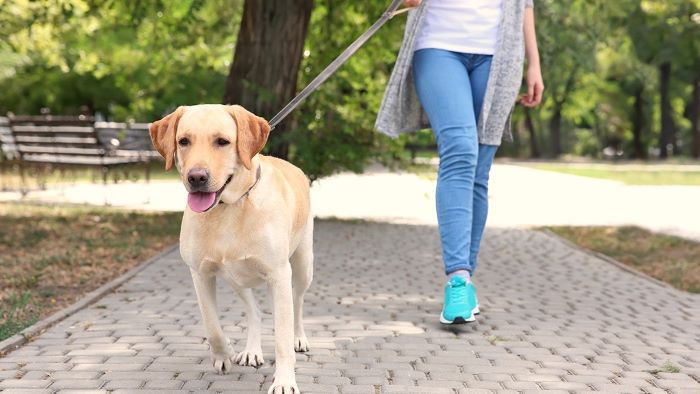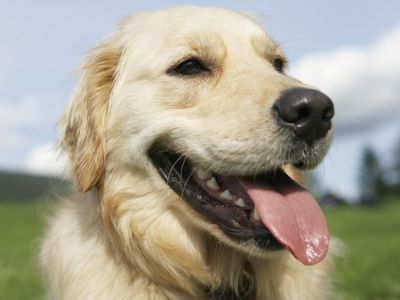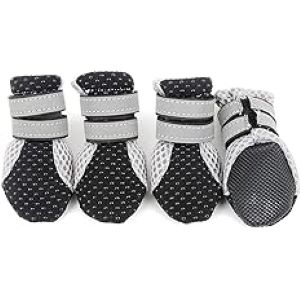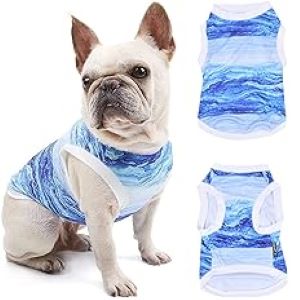Walking your dog is one of the best ways to keep them healthy and happy. However, when the weather gets too hot, walking your dog can become a risky activity that can harm your furry friend. Dogs are more sensitive to heat than humans. They can easily overheat and develop heatstroke, which can be fatal if not treated promptly.

So how do you know when is it too hot to walk your dog? And what can you do to prevent heat-related problems to keep your dog cool and comfortable? Let us explore the temperature range suitable for your dog to walk and some tips and tricks on how to walk your dog safely in the heat.
You Might Also Like:
When Is It Too Hot to Walk Your Dog?
The United Kingdom has warm to hot summers with moderate variation in temperature throughout the year. On average, the temperature ranges from 18 to 25 °C (64 to 77 °F). However, due to climate change, the temperature rises every year. As per the records, the temperature in the hottest days of the year increased by 1 °C per decade. The highest ever recorded temperature in the United Kingdom was recorded in 2022 at 40. 3 °C.[1]
As the temperature increases, it becomes difficult for you and your dog to maintain a regular walking schedule. With the rising temperatures comes the curiosity to know, when is it too hot to walk your dog?
Effects of different temperature ranges on your dog:
| Temperature Ranges | Effects on your dog |
| 12-15℃ | This is the safe temperature with no signs of heatstroke for all types of dogs regardless of their breed, age or any health condition. |
| 16-19℃ | This is also safe for all dogs however, you should keep a close eye on large and obese breeds for signs of fatigue. |
| 20-23℃ | Dogs suffering from an underlying condition such as obesity or breathing issues can have problems if exercised too rigorously at these temperatures. |
| 24-27℃ | Dogs that belong to large, obese and flat-faced breeds will have difficulty exercising at such temperatures. Also, senior dogs and young puppies might feel uncomfortable. |
| 28-31℃ | Dangerous for all breeds but especially life-threatening for larger breeds and young puppies. |
| Above 32℃ | Heatstroke is a major risk for dogs of all ages and breeds. |
Walks in summer are generally safe in temperatures up to 19℃, temperature above that is something you need to worry about. The range between 20 to 30℃ is generally safe for healthy dogs with some precautionary measures. However, heat exceeding that has a risk of heatstroke.
Healthy dogs may tolerate temperatures up to 28-30℃ but it is always advisable to constantly keep an eye on your dog and watch for signs of overheating. Moreover, you should take extra care while walking your dog on a sunny day to protect their paws and keep them hydrated.
Why Can’t I Walk My Dog in Hot Weather?
Just like we avoid going out in extreme heat, dogs too should be taken care of during heatwaves. Moreover, dogs have more adverse effects due to heat waves than us. Therefore, you should avoid walking your dog in hot weather.

Here are some reasons why you can’t walk your dog in hot weather:
- Cooling Techniques: Dogs don’t sweat as we do. Dogs have sweat glands beneath their paw pads and that’s the only way to release their body heat and cool them down. Though they pant, it takes time to cool down their body. Dogs are not efficient creatures when it comes to cooling down.
- Hairy Coats: Coats help the dog regulate the body temperature in summer. However, exercising on a hot summer day with such a heavy coat feels very uncomfortable for dogs.
- Sensitive Paw Pads: We often feel the pavements too hot even on the lightest sunny day, now think of your dog. The hot surface can cause severe burns and irritation to the sensitive paw pads on the dog.
- Risk of Hayfever: Hayfever is another increased risk during the summer months when grass and flower pollen are present in the air. These pollen particles can get stuck in the fur and can even penetrate the skin causing irritation and abscesses.
Heatstroke in Dogs
If the dog continues to be exposed to the heat, this will likely progress to heat exhaustion. Heat exhaustion is characterised by fatigue and weakness but may also include vomiting and diarrhoea. Research has found that around 75% of cases of heatstroke are due to over-exercising or exercising a dog on hot days.[2]

Heatstroke results from an inability of the body to cool down. This results in damage to the tissues of the body (inflammation), which leads to decreased blood flow to the organs and can ultimately cause organ damage and failure.
“Heatstroke can be caused by a dog’s environment being too hot or by its muscles generating too much heat from exercise. Dogs are more at risk of developing heatstroke if they are without water, good airflow or shade.“, confirms experts at TheKennelClub.
Signs of Having a Heatstroke
The signs of heatstroke include:
- Excessive panting
- Fast heart rate
- Dehydration
- Elevated temperature
- Vomiting
- Diarrhoea
- Weakness
If your dog is suffering from many of these symptoms, you should act fast to cool your pet, for example, with wet towels, ice cubes, and drinking water. You should immediately contact your vet as heatstroke is a deadly condition.
According to Veronica Higgs at petMD, “Heatstroke can occur very quickly and result in death in under an hour, especially if the pet does not have access to shade, water, and rest. This is an absolute emergency.”
Tips on Walking Your Dog in Hot Weather
Even on hot days, exercise is important for your Fido. Moreover, frequent potty breaks are a must to keep the house clean and proof potty training. Therefore, it is crucial to take the necessary steps in order to protect the dog from heatwaves and keep him fit and healthy too.

Here are some tips for walking your dog in hot weather:
- Walk your dog in the early morning or the evening. Avoid midday walks between 10 am to 4 pm. This will also reduce the risk of hay fever.
- Always carry a portable water bottle with you, so when the dog needs it, he has access to water.
- Avoid exercising any unwell or dehydrated dogs above 23℃, as they may find it more difficult to control their body temperature.
- Consider attaching a lead to a harness rather than to the collar. This is because leads that pull on a collar can press on the dog’s airways and stop them from cooling down as effectively.
- Use pet-safe sun cream on exposed parts of your pet’s skin such as the tips of their ears and nose, to avoid sunburn. This is especially important if your dog has white or light-coloured fur.
- Groom them regularly as it can help brush away any dead or excess hair, leaving your dog with a less dense coat, which is much better for staying cool.
Consider wearing dog walking gloves to protect your hands from hot pavement while holding the leash.
Along with these tips, you should always look for signs and symptoms of heatstroke. Never force your dog to go on a walk as he might not be feeling well. Check the paw pads for signs of redness and irritation due to walking on hot surfaces and most importantly, keep the Fido hydrated.
FAQs
What temperature is too hot to walk a dog?
It’s generally safe in temperatures of up to 19°C (68°F) but be careful when the temperature rises above this. Even at temperatures as low as 20°C (70°F) dogs are at risk of heat stroke. Heat stroke in dogs is essentially a high temperature not caused by a fever.
How can I cool my dog down?
Keep your dog hydrated, walk them at cooler times of the day and let your dog rest. Moreover, you can use a paddling pool, provide cooling mats and ice packs and some ice treats might also help. In addition to this, use wet, cool towels and cooling coats and collars.
Should I wet my dog when it’s hot?
Playing with water is a great way to keep your dog cool in hot weather and it’s a lot of fun. Try setting up a sprinkler or a shallow paddling pool in the garden to refresh them while they play.
What do you feed dogs in hot weather?
Give your dog water that is cool or at room temperature. Ice-cold water can be a shock to a dog’s system in the heat of summer. You can also feed your dog foods that have a high water content, like watermelon or cucumber.
Overview
Walking your dog is a great way to bond with them and provide them with exercise and stimulation. However, when the temperature rises, it can become dangerous and even deadly. Dogs can suffer from heatstroke, dehydration and paw pad injuries if they are exposed to excessive heat for too long.
To avoid these risks, you should always check the weather and the ground temperature before taking your dog for a walk. You should also avoid walking your dog during the hottest hours of the day and choose shady and grassy areas instead of sunny and paved ones.
If you notice any signs of overheating or distress in your dog, you should stop your walk immediately and seek veterinary attention. Remember to always monitor your dog closely in hot weather and adjust your walking routine accordingly. And don’t forget to have fun with your dog while exercising!
Just as extreme heat can be dangerous for dogs, so can extreme cold. Be sure to also monitor the weather conditions in winter and check out our article on when is it too cold to walk your dog.
Walking provides dogs with exercise, stimulation, and bonding time with their owner. Not being able to go on regular walks, especially in hot weather, can have consequences. What happens if you don’t walk your dog? Read on to learn more.
References:






